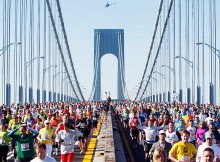How – and how not – to travel for running races | What To Know
What would you do for a beautiful Sunday when you are at New York City? You never expect there are 50,000 runners in New York City for a marathon. More than 50,000 runners are expected to travel to New York City this Sunday for the marathon. If you’re one of them, or if you’ve ever traveled […]
Read More